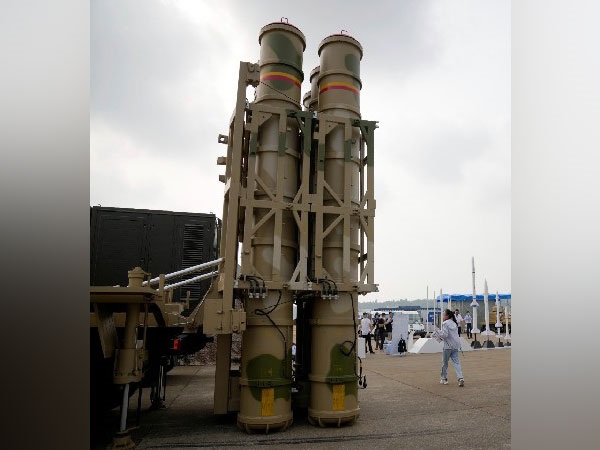China's explosive missile test causes consternation
Revelations about an advanced Chinese missile test in August have startled many by the technological know-how displayed by China.

Hong Kong: Revelations about an advanced Chinese missile test in August have startled many by the technological know-how displayed by China. In the test, a space rocket boosted a hypersonic glide vehicle, one capable of carrying a nuclear device, which circled the globe before impacting.
The startling news, presented in a story written by Demetri Sevasopolu and Kathrin Hille, was broken by the Financial Times on 17 October. The hypersonic glide vehicle (HGV) was launched atop a Long March 2C rocket, and it flew through space in a low orbit before impacting about 24 miles from its target. China failed to divulge this 78th launch of a Long March 2C rocket, which occurred between other launches on 19 July and 24 August.
This underscores how China's space program falls under the aegis of the People's Liberation Army (PLA). This project is led by the China Academy of Aerospace Aerodynamics, a subdivision of the China Aerospace Science and Technology Corporation (CASC). CASC's achievement was certainly astounding. It was the first time China has conducted such a feat, and the pace at which Beijing is developing such technologies is the stunning US officials.
This capability bears all the hallmarks of a fractional orbital bombardment system (FOBS). Russia was the first country to develop one in the mid-1960s, before fielding multiple-warhead missiles made its FOBS redundant.
Also Read |
US Prez Donald Trump and Chinese leader Xi Jinping speak for the first time since Trump's inauguration
What is a fractional orbital bombardment system? It comprises an intercontinental ballistic missile (ICBM) that launches a warhead into low Earth orbit. When the payload approaches its target, an onboard retro rocket detaches the payload and causes it to return to Earth. The trajectory of an FOBS is very different to that of a ballistic missile, which follows a parabolic curve with its apogee in space. FOBS, on the other hand, are more maneuverable and have a flatter trajectory, making them more difficult to track and hit.
Frank Kendall, the US Air Force Secretary, dropped hints last month that China was developing such a weapon. He noted China was making huge advances, including the "potential for global strikes...from space". He said about FOBS: "If you use that kind of an approach, you don't have to use a traditional ICBM trajectory. It's a way to avoid defenses and missile warning systems." Indeed, a fielded FOBS-type missile and HGV would bypass existing American ballistic missile defenses (BMD). Its early-warning radars are in Alaska, California, Greenland, Massachusetts and the UK, pointing north, east and south. Most interceptor missiles are based in Alaska, ready to face an attack coming from the north via the North Pole.
The problem for American BMD is that Chinese FOBS can perform strikes from unexpected directions and vectors - via the South Pole, for example. Furthermore, they would have virtually no limit to their range, and would be highly challenging for US midcourse interceptors to counter since they are designed for parabolic ballistic trajectories that have a known range for each flight stage. Thus, an FOBS would be the most formidable target for a BMD network.
Also Read |
Trump meets manufacturing executives, seeks to bring 'real jobs' back to U.S.
In other words, this Chinese innovation will completely upset the apple cart of American missile defense if it becomes operational. Derek J. Grossman, a senior defense analyst at the RAND Corporation, tweeted, "China may have just achieved its own Sputnik moment against the US military. Hard to exaggerate how much of a game-changer this space-based capability might be if perfected. US missile defenses could become negated or even obsolete."
It must be stressed that this was a test, rather than deployment of a fully developed FOBS. The fact that China used a space rocket rather than an ICBM showed it is still some time away from developing a militarized launch-and-delivery package. Presumably, this is not China's final form of the weapon, and the August launch was an opportunity to test combinations and capabilities.
China refused to comment on the test, merely saying, "We don't have a global strategy and plans of military operations like the US does. And we are not at all interested in having an arms race with other countries. In contrast, the US has in recent years been fabricating excuses like 'the China threat' to justify its arms expansion and development of hypersonic weapons. This has directly intensified arms race in this category and severely undermined global strategic stability." Beijing insisted its military policy is purely "defensive in nature", but this does not jibe with development of an offensive FOBS system. Normally an FOBS would carry a nuclear-armed re-entry vehicle, but China went one step further by using a hypersonic glide vehicle. This hybrid combination possesses great kinetic energy and allows a long, maneuvering, high-speed flight as it closes on a target.(ANI)
 Dynamite News
Dynamite News 